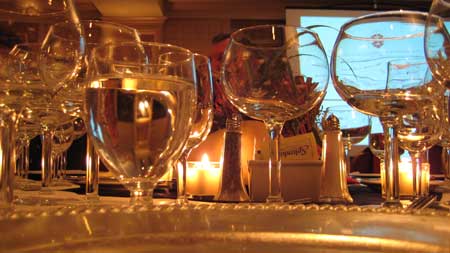
Texas Winemakers Gather their Pluck
….The Race for a Place on Restaurant Wine Lists is On!
Ever go to your favorite restaurant and have a dark, inky East Texas Bordeaux blend with your Steak Au Poivre? How about a well-structured Texas High Plains Tempranillo with your a garlicky ox tail tapa, a fragrant Texas Hill Country Viognier along with a wood-oven roasted rosemary chicken, or a Gulf-Coast Madeira-style wine with your chocolate bread pudding? I reckon that you likely haven’t. Not because you can’t, but frankly, they can be downright hard to find.
Some say that Texas wines are fighting a losing battle to gain slots on restaurant wine lists. However, I think that the quote from fellow Texan, Dan Rather, pretty well sums up the cup’s-half-full mentality of many in the Texas wine industry when he said…..“Put on another pot of coffee, this race isn’t going to be over for a while”. Texas wineries are just starting to get serious in the race for a place on wine lists.
Frankly, I lament that despite the steady increase in quality, reputation and popularity of Texas wines over the past decade, it has been hard to find even a single Texas wine on many restaurant wine lists. This is most surprising in a state where people take great pride in our native sons, local accomplishments and most everything agricultural. To help understand where Texas wines actually fit on restaurant wine lists, I posed several questions to people in the know from around our great state.
It’s not Anti-Texas Sentiment
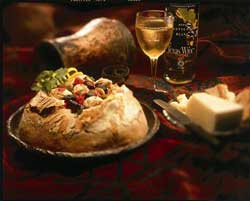 Mark Hyman, President of Llano Estacado Winery (www.llanowine.com) in Lubbock, described thecompetitive situation and summed it up this way. “The biggest impediment to getting Texas wines on restaurant wine lists is not due to anti-Texas sentiment at all. It is the incredible availability of good wine from this country and the rest of the world. There are great value wines from Chile and Australia with impeccable reputations that have earned the respect of restaurateurs.”
Mark Hyman, President of Llano Estacado Winery (www.llanowine.com) in Lubbock, described thecompetitive situation and summed it up this way. “The biggest impediment to getting Texas wines on restaurant wine lists is not due to anti-Texas sentiment at all. It is the incredible availability of good wine from this country and the rest of the world. There are great value wines from Chile and Australia with impeccable reputations that have earned the respect of restaurateurs.”
Having observed the Texas wine experience for the past ten years, the biggest impediment to getting Texas wines on wine lists that I have seen is that there has been no advocate for Texas wines despite increasing quality and major awards. However, the horsepower of the Texas Department of Agriculture is now been firmly engaged behind Texas grape growers and winemakers and TDA is providing broad-based agricultural, wine quality and marketing support.
Do the Texas Two-Sip
Late last year, I went to Austin to attend TEXSOM 2008, a meeting of Texas sommeliers, and did one of my first field blogs from the meeting (See: https://vintagetexas.com/?s=Texsom). I was particularly pleased to see Texas Department of Agriculture personnel doing their version of the Texas Two-Step called, The “Texas Two-Sip”. No, they weren’t dancing to delight the crowd. They were pouring Texas wines for Texas sommeliers and representatives from Texas wine distributors in attendance at the meeting. The pours were made side-by-side with well known wines commonly found in restaurants – One Texas wine with one “Foreign” wine; hence the name “Texas Two-Sip”. The responses from the attendees were quite impressive as the Texas wines held their own against a Viognier from France, a Sangiovese from Italy and a Tempranillo from Spain.
I was delighted that Texas winemakers are now gathering the pluck to go toe-to-toe with well-known wines from around the world. The Texas Two-Sip shows that Texas has seriously arrived as a quality wine producing region. Hopefully, this effort will continue at other venues such as in restaurants and wine bars with consumers, and in Texas wine events around the state. This will give wine and restaurant industry representatives and consumers a chance to experience the quality of Texas wines for themselves.
Say it Ain’t So Joe
Interestingly enough, one of the biggest fans of Texas wines has been Chef Joe Mennke owner of the decades- old, Houston mainstay, Rotisserie for Beef and Bird. Chef Mennke’s restaurant career may have started over 50 years ago as an apprentice in Munich with deep European roots, but he was one of the first major chefs to identify that Texas wines are worthy of restaurant wine lists.
According to Chef Mennke, “Before I retired my Beef and Bird restaurant, we featured over fifty Texas wines on our award winning wine lists.” Actually, he was a bit understated; his wine lists [even with this number of Texas wines] were winners of the coveted Wine Spectator Grand Award for 14 years. However, Chef Mennke lamented, “Most restaurateurs just don’t want to bother to learn about Texas wines, they would rather just sell Kendall-Jackson or whatever the distributor has and be done with it. They just do not have the interest of Texans in mind.”
What were Chef Mennke’s personal favorites? They were Becker Viognier and Cabernet Sauvignon. What about other chefs and restaurateurs around the state? I have found some that feature Texas wines prominently.
Some Restaurateurs Know Their Texas Wines
 Most recently, Monica Pope’s Houston-based restaurant T’afia seems to be a pack leader when it comes to featuring Texas wines. Chef Pope is known for utilizing local fare on her menu. This includes a variety of Texas agricultural products including a host of meats, cheeses, fruits, vegetables and even wine. A search of her online wine list (www.tafia.com/wine.html) shows a respectable total of ten Texas wines from Flat Creek, McPherson Cellars, Inwood Estates and Becker Vineyards, and varietals that include Sauvignon Blanc, Viognier, Cabernet Sauvignon and Tempranillo.
Most recently, Monica Pope’s Houston-based restaurant T’afia seems to be a pack leader when it comes to featuring Texas wines. Chef Pope is known for utilizing local fare on her menu. This includes a variety of Texas agricultural products including a host of meats, cheeses, fruits, vegetables and even wine. A search of her online wine list (www.tafia.com/wine.html) shows a respectable total of ten Texas wines from Flat Creek, McPherson Cellars, Inwood Estates and Becker Vineyards, and varietals that include Sauvignon Blanc, Viognier, Cabernet Sauvignon and Tempranillo.
Michael Vilim, owner of Austin’s Mirabelle Restaurant (www.mirabellerestaurant.com) has found his Texas favorites which include a similarly long list of wines from Alamosa, Fall Creek, Spicewood, Becker, and Flat Creek. Vilim lamented to me that perhaps he has not done enough to seek out other outstanding Texas wines.
However, he also mentioned that he once attended a Sangiovese tasting with Pete Seghesio, whose family is a major name in winemaking and makes award winning Sangiovese in Italy, as well in California. After Texas’ own Alamosa Wine Cellars placed in the middle of a notably good pack of Sangioveses in a blind tasting, Pete said without hesitation, “Alamosa is a very good wine and it will get even better as the vines get on age”. Alamosa Sangiovese Riserva is one of Vilim’s personal favorites and Mirabelle once created a special recipe to feature with this wine. It was their Smoked Pork Tenderloin Flauta with Sun-Dried Cherry Chutney, Ancho Chile Caciotta and a Charred Ancho-Mexican Oregano Sauce. Now, that’s a mouthful to both say and to digest!
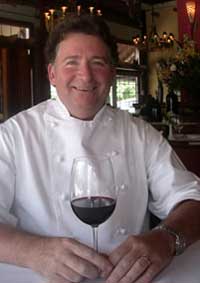 Chef John Sheely at his Mockingbird Bistro (www.mockingbirdbistro.com) in Houston looks critically at Texas wines, but has been able to find wines that provide particularly good value and quality to his clientele. Over the years, Mockingbird Bistro has highlighted Becker Viognier, Messina Hof Papa Paulo Port and Angel (Late Harvest Riesling), Val Verde Sangiovese, Sister Creek Meritage (red blend), Alamosa El Guapo (Tempranillo blend), and Pheasant Ridge Cabernet Sauvignon. Chef Sheely has even paired Texas wines with some of his signature dishes. A good example is his famous Slow Braised Short Ribs that he paired with a modern blend of Cabernet-Syrah made by Becker Vineyards. Currently, Mockingbird Bistro is featuring McPherson Cellars Viognier on its wine list and it is well worth a try.
Chef John Sheely at his Mockingbird Bistro (www.mockingbirdbistro.com) in Houston looks critically at Texas wines, but has been able to find wines that provide particularly good value and quality to his clientele. Over the years, Mockingbird Bistro has highlighted Becker Viognier, Messina Hof Papa Paulo Port and Angel (Late Harvest Riesling), Val Verde Sangiovese, Sister Creek Meritage (red blend), Alamosa El Guapo (Tempranillo blend), and Pheasant Ridge Cabernet Sauvignon. Chef Sheely has even paired Texas wines with some of his signature dishes. A good example is his famous Slow Braised Short Ribs that he paired with a modern blend of Cabernet-Syrah made by Becker Vineyards. Currently, Mockingbird Bistro is featuring McPherson Cellars Viognier on its wine list and it is well worth a try.
The Texas Hill Country is Leading the Way
Even more interesting is the trend in the Texas Hill Country, which is rapidly becoming the Texas Wine Country. This region combines both wine country and lone star tourist attractions to travelers from Texas, the nation and around the world. Restaurants in the Hill Country, some located along what is rapidly becoming known as the “Route 290 Wine Corridor” between Johnson City to Fredericksburg, are breaking stride with other restaurants in Texas and have started wine lists dominated by Texas wines.
Kay Pratt & Karen Granitz, owners of the Silver K Café (www.silverkcafe.com) in Johnson City, feel that their experience shows that many tourists are particularly interested in Texas wine and some even come here from wine-savvy places like New York and California specifically for Texas wines. They pointed out, “We carry only a very few wines that are not Texas wines. Being in Johnson City, home of Texas Hills Winery and near the epicenter of the Texas Wine Country, we get a large number of tourists from all over that seek out a Texas experience. The tourists are always excited to taste Texas wines and are quite surprised that there are so many and they are so good!” The Silver K wine list currently offers 22 Texas wines with only five “foreign” wines that originate from outside of Texas.
The Cabernet Grill (www.cottonginlodging.com/restaurant.html) in Fredericksburg offers the granddaddy of all wine lists for Texas wines. Executive Chef Ross Burtwell has an “All Texas Wine List” composed of over fifty Texas wines and, if you include wines by the glass and featured wine flights, the number of selections increases to over seventy-five.
I have been told that when Chef Burtwell adds a new Texas wine, he invites a representative from the winery to talk to his wait staff. If the winery is close by, he will even get a busload of his staff together and visit the winery in person. This way the restaurant personnel can talk and describe the Texas wines in an educated way. This makes good business sense for Chef Burtwell’s restaurant. Many Texas wine consumers (Texans, naturalized Texans, recent immigrants and visiting foreigners) are still learning about what Texas wines offer and can utilize this information in their wine selection.
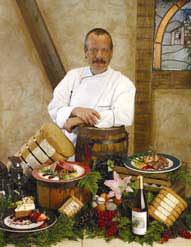 Based on my recent visit to the Cabernet Grill, Chef Burtwell offers another benefit to Texas wine consumers – Wine Flights. These are a selection of three of four featured Texas wines that are poured at the same time in separate glasses. This allows the restaurant-goers to taste and compare several wines while enjoying their dinner. This way the clientele can experience how various wines go with different food preparations and determine what they like best.
Based on my recent visit to the Cabernet Grill, Chef Burtwell offers another benefit to Texas wine consumers – Wine Flights. These are a selection of three of four featured Texas wines that are poured at the same time in separate glasses. This allows the restaurant-goers to taste and compare several wines while enjoying their dinner. This way the clientele can experience how various wines go with different food preparations and determine what they like best.
Chef Burtwell said, “The first reason that Texas wines have just not achieved the level of acceptance they deserve from people who put wine lists together is that many restaurateurs are too busy reading about what are the ‘must have wines’ listed in the Wine Spectator and Wine Enthusiast. Texas wines just do not get a lot of press there.”
My information supports Chef Burtwell’s understanding of the situation. It is a fact that the ‘M.I.A. status’ of Texas wines in these publications is not because they are not good wines. It boils down to shear economics. Texas is a big wine consuming state and Texas wines are mostly consumed locally. They generate little or no ad revenue for these publications. Nuff said.
Burtwell continued by saying, “Texas wines are just not that well represented in the portfolios of the major wine distributors such as Republic and Glazers. They carry some of the larger vineyards like Becker, Fall Creek, St Genevieve and Messina Hof, but the smaller properties are few and far between. Obviously the salesmen for these companies are going to promote what is easiest to sell, and that rarely is wine from Texas.” The bottom line is that Texas wines need an advocate. The Texas Department of Agriculture is a great promoter, but consumers also need to make an effort to ask for Texas wines.
I also asked Chef Burtwell if an all Texas wine list could work in major Texas cities like Houston, Dallas, Ft. Worth, Austin or San Antonio. He said, “I am fortunate to be in an area where we can drive ten minutes to pick up some wines directly from the Hill Country wineries or ask someone on the winemaker’s staff to drop a case by when they are in for dinner on any given night. We get a lot of our wine directly from the wineries. It is not as easy to do it this way, particularly in a major city. However, I feel that the good things in life never are easy and must be pursued.”
With respect to a strong Texas wine list in major cities, Chef Burtwell continued with a resonant “Yes, of course, why not? I think if the restaurateurs in these markets had any clue as to how many of their customers are choosing to visit the Texas Wine Country they may re-think their wine lists and feature Texas wines. Orbitz announced last year that the Texas Hill Country is the second most visited wine region in the nation after Napa Valley. This is huge! Furthermore, the visitor research information in Fredericksburg shows that wine tourism is the fastest growing segment of Fredericksburg visitor activities. All this must translate to a strong interest from consumers about Texas wines.” When will restaurateurs and sommeliers see what’s going on with respect to Texas wine.
Now for the Good News
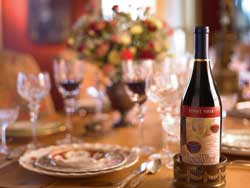 The number of restaurants including Texas wines on their wine lists is growing albeit slowly, step-by-step, and this actually bodes well for the future of Texas wines as long as we can keep the trend heading upward. As production of Texas wines increase, this will translate to successful fusion of Texas wines into more wine lists.
The number of restaurants including Texas wines on their wine lists is growing albeit slowly, step-by-step, and this actually bodes well for the future of Texas wines as long as we can keep the trend heading upward. As production of Texas wines increase, this will translate to successful fusion of Texas wines into more wine lists.
In this short article, it is not possible to mention all of the visionary restaurateurs and sommeliers that are starting to see the trends in consumer interest in Texas wines and are starting to hop onboard the Texas wine train. An honorable mention should go to restaurant chains like Salt Grass Steakhouse and Pappadeaux that from time-to-time offer Texas wines. I personally enjoyed a glass of Messina Hof Riesling at a Pappadeaux in Fort Worth last year and it was a great pairing with a bowl of their seafood gumbo and a shrimp Caesar salad. The Meritage Grill at The Hilton DFW Lakes Hotel (Grapevine), and fine dining establishments like The Mansion on Turtle Creek (Dallas), Del Frisco’s Double Eagle Steak House (Fort Worth), The Four Seasons (Austin), and Cafe Annie (Houston) all have Texas wines to offer their clientele.
Most importantly, we all need to keep in mind a very important fact that we should not forget: Consumers have the ultimate power. If they know about the quality of Texas wines and remember to request them from the restaurants they frequent, more and more premium Texas wines will be showing up on wine lists. So, as they say in Texas, ‘Take the bull by the horns’. Don’t forget to ask your restaurateur or sommelier to include your favorite Texas wines on their wine list!
——————————————
P.S. – RESPONSE REQUESTED: If you know of restaurants or wine bars that offer Texas wines, please let me know by reply with your comments in the space provided at the bottom of this blog. Make sure to indicate the name of the establishment, city and wines featured (Web addresses are welcome). This will help spread the word to others who are also searching for a fulfilling meal with a good bottle of Texas’ finest.

RESPONSE REQUESTED: If you know of restaurants or wine bars that offer Texas wines, please let me know by reply with your comments in the space provided. Make sure to indicate the name of the establishment, city and wines featured (Web addresses are welcome). This will help spread the word to others who are also searching for a fulfilling meal with a good bottle of Texas’ finest.
Just found your site and really like the content and layout, especially the Texas slant. I have a blog called TheWineCult with a smaller focus on TX than you site.
Great article, Russ! It all boils down to consumer awareness — that’s the driving force. But in order to get that awareness, sales entities (both on- and off-premise) need to be willing to take the leap and begin selling Texas wines in their establishments. This is exactly how once-lesser-known regions began to gain credibility. Then, you create a feedback loop: availability encourages consumption, which spurs demand, which stimulates supply. But it really needs to start within Texas. Then, before long, it’s bound to spread elsewhere. The state government is apparently doing a fantastic job building up the production infrastructure. Now, I wonder, if perhaps it’ll be up to the Texas wineries themselves to engage in more aggressive outreach in marketing and selling to the distributors and restaurants.
Nikitas,
I think the major barrier from the winery side is the limitation being created by the exterme shortage of Texas grapes at the moment. A combination of two difficult harvests (late freeze and summer rain in 2007 and 2008) and the explosion in the number of wineries (80 in 2003, 110 in 2005 and over 170 in 2009) has made it hard to commit to expanding the effort in restaurants until the in-state production increases. I think that Texas needs about 3 to 5 years to get the equation in line.
Thanks for the comments from SFO.
Russ
Fall Creek Chardonnay
Inwood Estates Tempranillo-Cabernet
It think that you have a good idea here, but when updating your website, I think that it would be good to put the location. It will help get customers to show up.
There are many great wines from Texas who are not available to the general consumer because distributors don’t carry these smaller brands. Which one would you love to see on the shelves of your local supermarket?
Tim,
Houston is better than most places as we have Spec’s that has a very complete Texas wine section. But, generally I would say that wines that I have not found in Houston include:
San Martino Winery – Rockwall, Texas (Great Tempranillo)
Singing Water Vineyards – Comfort, Texas (small operation doing good things with Savignon Blanc and Texas Red Blend)
Brushy Creek Vineyards – Alvord, TX (Old Les Constable is blending Cab, Tempranillo, Mourvedre and Tanat)
Barking Rocks Winery – Granbury, Texas (Red Blends)
Light Catcher Winery – Ft. Worth Texas (Merlot, Cab, and a fun Sangria Port)
Pedernales Cellars – Stonewall, Texas (Viognier)